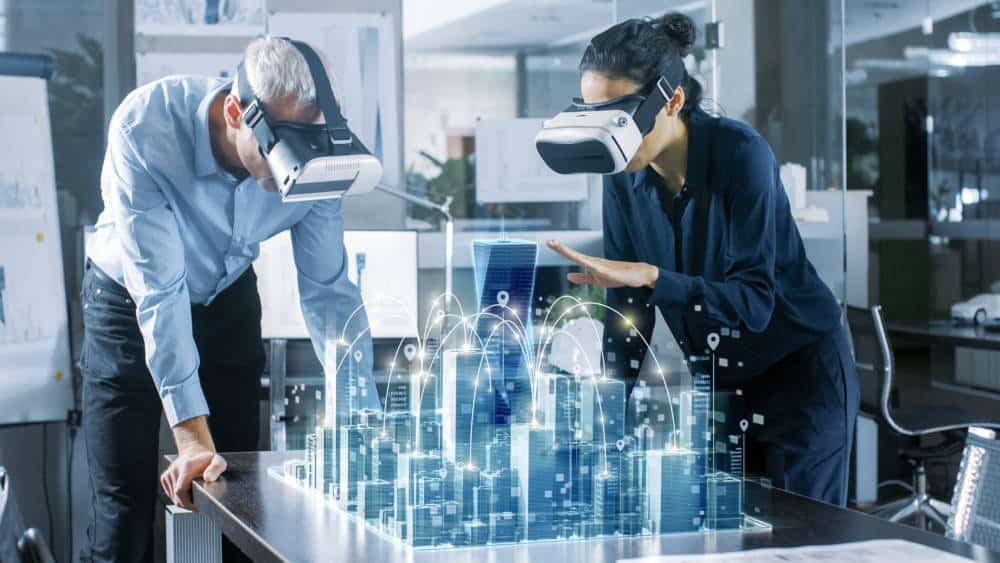Since the advent of Augmented Reality, one of the categories to most embrace this new technology has been that of architects and designers. The reason is quite simple, these professionals were already accustomed to design 3D projects and to deal with 3D models, so they have always had a lot of material to be fed to Augmented Reality software.
Even tough 3D models have been at the base of almost any architectural and civil engineering project in the last two decades, for a long time many professionals have continued working with renderings, a bidimensional representation of the project made using the 3D models, basically pictures from a few different points of view of the 3D representation.
Over time, this way of presenting the project has begun to hold out against professionals in the sector and their clients, essentially for two reasons. The first is that with the renderings many details and many sensations related to the visualization of the project are lost; the second is that with the renderings one renounces to fully exploit the potential of a 3D model, especially since BIM has begun to establish itself.
Why is Augmented Reality so important in Architecture?
With the Building Information Modeling (BIM) market valued at $5,205 million in 2019, and projected to reach $15,892 million by 2027 (Source: Allied Market Research), the use of digital content and the digitalization of assets management are strongly pushing nearly any mid-sized to large project towards a massive use of 3D, not only for design purposes, but also for visualization and building management.
In addition, the use of photogrammetry in relation to construction sites and the management of existing sites is also increasing, with an increasing use of drones for photogrammetric reconstructions. Even on everyday devices, including smartphones, tools such as Lidar are starting to arrive that will make photogrammetry and the ability to process accurate 3D reconstructions at low cost more and more accessible.
This abundance of 3D assets, with a lot of information embedded, play a vital role in the adoption of Augmented Reality for Architecture.
Augmented Reality Use Cases in Architecture
We analyzed a few use cases where we believe Augmented Reality can have a strong impact on the way AEC professionals approach their Architectural projects.
Use Case 1 – Project Design and Collaboration
Architects nowadays mostly work with 3D modeling software during the design stage of a project. While working with the model they may be able to check how they are progressing by viewing their project in Augmented Reality mode. This kind of view gives them better hints for the parts of the model to be improved and the AR visualization may even be done at a 1:1 scale.
Architectural visualization using AR in the design stage is also very useful when there is some degree of collaboration involved. The viewers may see the same 3D model, in real-time and discuss together what must be changed.

Use Case 2 – Project Visualization
Project visualization works very similarly to project design, the main difference is that now the project is complete and the client wants to see it even before the construction site is open.
Augmented Reality visualization allows the Architect to show the client how the project looks like in a very realistic manner.
The 3D model can be used for AR visualization on an image, like a planimetry, or in the space, including the construction site where the model can be viewed at its actual size, including the interiors, allowing the user to walk inside the 3D model as if it were a real building. The use of stereoscopy would make the entire visualization experience more immersive.
Use Case 3 – Marketing and Real Estate for Architectural Projects
For the purpose of selling or promoting a real estate property, Augmented Reality comes really handy because it allows the sales force to easily build a more immersive representation of a project that may exist just on paper because its construction has not yet begun.
That is when AR brochures prove to be very effective. The prospect can point their device to some marketing materials and explore the 3D models of the project. These models may even have some interest points that the prospect may touch to enable additional information, such as 360? views of the interiors, videos and audio explanations.
Another marketing application in the real estate field concerns the use of immersive VR home tour, allowing the potential buyers to get an idea of a property even before visiting it, helping them to shortlist for the real visit, only the properties that they liked the most.

Use Case 4 – Site Management and Maintenance
A last set of use cases for Augmented Reality in Architecture is related to all the activities that must be carried out while the construction process is ongoing and when the building is finally built.
During the construction stage AR offers advanced tools to assess if structural clashes may arise and to assess if the construction process is progressing according to the schedule.
When the construction stage is over, AR can be used to support workers in a set of tasks including operations and maintenance, like repairing pipelines, fixing air conditioners, replacing parts of the boiler and so on.

How to easily use Augmented Reality for Architecture
Augmented Reality can support Architects and BIM Managers in a very wide array of activities, from project design to assets management.
The wide availability of 3D models and BIM models makes the adoption of Augmented Reality tools easier today than it was a few years ago. Also mobile devices are becoming more and more powerful and they come now with embedded hardware that can be useful to create photogrammetric reconstructions, like the Lidar.
In this scenario AR-media is the ideal tool to build and publish Augmented Reality projects for Architecture, as it requires no coding skills and allows the user to create AR content with a visual, simple workflow. Get a free AR-media account and start creating, you can rely on detailed tutorials and documentation available in the support section.

